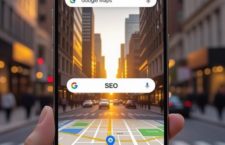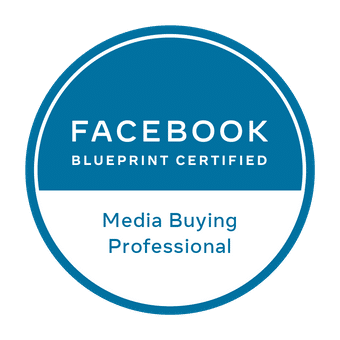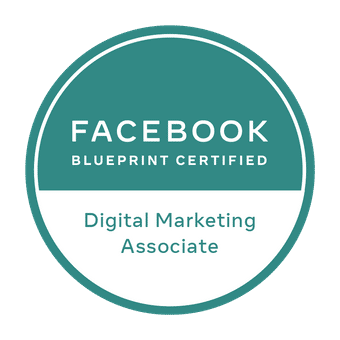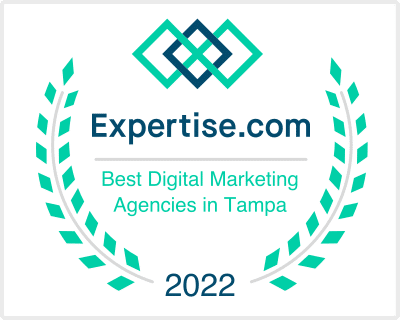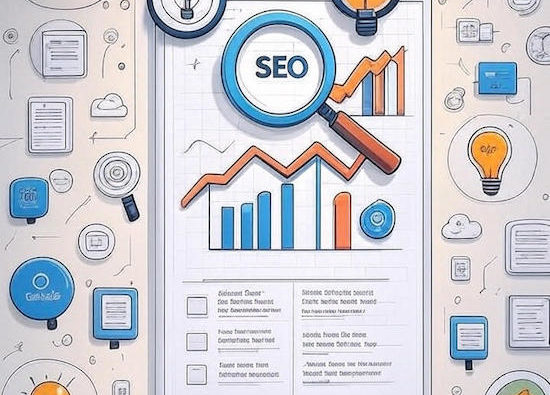
You spent months building the perfect website for your business. The pictures are beautiful. Your message is clear. You’re ready for customers! So, you type your business name into Google. There it is! But then, you search for the actual product or service you sell, like “best coffee shop in Tampa” or “affordable plumber near me.” You scroll… and scroll… and your website is nowhere to be found. Page after page of results, and it’s all your competitors. At this point you might be asking yourself, “What is SEO?”
Where are all your customers? They’re clicking on the websites that show up on that first page. This, right here, is the problem that SEO solves.
Ever wondered how some websites magically appear at the top of Google’s search results? It’s not magic. It’s a powerful process called Search Engine Optimization, or SEO for short.
In simple terms, SEO is the practice of helping your website get found by people using search engines like Google, Bing, and DuckDuckGo.
Think of it like this: The internet is a giant library. Every website is a book in that library. A search engine is the brilliant librarian. If your book has a messy cover, no title, and is stuck in the wrong section, the librarian will never find it to recommend it to readers. But if your book has a clear title, a great summary, is placed in the perfect section, and is cited by other great books, the librarian will confidently hand it to anyone who asks for a topic you cover. SEO is the work you do to make your book—your website—the librarian’s first choice.
What Does SEO Stand For? (The Basic Definition)
Let’s break down the name to understand it better.
- Search Engine: This is a tool people use to find answers. Google alone processes over 8.5 billion searches every single day. People are searching for answers, products, and services right now.
- Optimization: This is just a fancy word for making something as good as it can be. It’s the process of tweaking and improving something to get the best results.
So, put them together: Search Engine Optimization is the work you put into your website to make it as attractive and useful as possible to search engines. When search engines find your website useful, they show it to more people. Here is a link to Wikipedia for general SEO information.
It’s about speaking the search engine’s language so it can connect your website with the person who needs it most.
Now that we know what it stands for, let’s talk about why you should care.
Why is SEO So Important for Your Business?
You might be thinking, “I have a Facebook page, isn’t that enough?” While social media is great, SEO is different. It’s one of the most powerful tools for growing your business online, and here’s why:
- It’s Where Your Customers Are: Think about your own habits. If you need a new dentist, need to fix a leaky faucet, or want to find a new recipe, what do you do? You “just Google it.” Over 90% of online experiences begin with a search engine. If you’re not showing up there, you’re missing almost all of your potential customers.
- It Builds Trust and Credibility: People trust Google. If your website pops up on the first page when they search for something, they instantly see you as a more legitimate and trustworthy business. Being #1 doesn’t just mean more traffic; it means you’re seen as the #1 expert in your field.
- It’s Free Traffic (Sort Of): Unlike Google Ads, where you pay every time someone clicks on your ad, the traffic from SEO is “organic.” This means you don’t pay for each click. You invest time and effort (or hire an expert) into optimizing your site, and that work can bring you visitors day after day, for years. It’s a long-term investment that keeps paying off.
- It Levels the Playing Field: A small, local bakery with a perfectly optimized website can absolutely outrank a huge national chain that has ignored SEO. It’s not always about who is the biggest; it’s about who is the most relevant and useful to the searcher.
Understanding its importance is the first step. Next, it helps to know a little about how the “librarian” does its job.
How Do Search Engines Work? A Simple Explanation
Google doesn’t have a tiny team of people scurrying around the web. It uses incredibly smart software to do three main things:
- Crawling: Search engines use programs called “bots” or “spiders.” Their job is to explore the internet non-stop. They follow links from one webpage to another, discovering new pages and new content every second of every day.
- Indexing: After bots discover a page, they need to figure out what it’s about. They analyze the text, the images, and other elements on the page. Then, they store all this information in a gigantic database called an index. Think of the index as the library’s master catalog.
- Ranking: This is the most important part. When you type a query into Google, its engine doesn’t search the entire live web. It searches its own index. It looks at all the millions of pages in its catalog that are relevant to your search and then ranks them in order from most helpful to least helpful. How it decides this is based on hundreds of factors, which is what SEO is all about.
So, how do you make sure your website is not only found by the bots but also ranked highly? You focus on the three pillars of SEO.
The Three Pillars of SEO: The Foundation of Success
To make sense of all the SEO advice out there, you can break it down into three main categories. You need all three for a strong website.
Pillar A: Technical SEO (Your Website’s Foundation)
What it is: This is all about making your website easy for search engine bots to crawl and understand. If your site has technical problems, it’s like having a store with a locked door and broken lights—no one can get in, and if they do, they can’t see anything.
Key elements include:
- Site Speed: A fast-loading website is crucial. People (and Google) hate waiting. If your site takes more than a few seconds to load, people will leave.
- Mobile-Friendliness: Most people now browse the web on their phones. Your website must look good and work perfectly on all devices—phones, tablets, and desktops.
- Secure Website (HTTPS): This is the little lock icon you see next to a website’s address. It means the connection is secure. Google prefers secure sites, and it makes users feel safe.
- Crawlability: This means ensuring there are no barriers stopping the search engine bots from moving around your website and seeing all your important pages.
Think of Technical SEO as the foundation of your house. Without a solid foundation, it doesn’t matter how beautiful the furniture is.
Pillar B: On-Page SEO (Optimizing Your Content)
What it is: This is the work you do on each individual page of your website to make it relevant to specific words people search for (called “keywords”). This is where you create amazing content for both users and search engines.
Key elements include:
- Keywords: These are the words and phrases people type into Google. Your goal isn’t to just stuff them everywhere, but to create content that naturally answers the question behind the keyword.
- Title Tags: This is the clickable blue headline you see in the search results. It should be clear, compelling, and include your main keyword.
- Meta Descriptions: This is the short paragraph of text under the title tag in search results. It summarizes the page and should make someone want to click.
- Headings (H1, H2, H3): These are the titles and subtitles on your page that break up text. They help users read your content and help Google understand the structure of your page.
- Content Quality: This is the #1 rule. Your content must be helpful, original, and answer the user’s question better than any other page. Always write for humans first.
- Image Optimization: Using descriptive file names (e.g., “chocolate-chip-cookies.jpg” instead of “IMG12345.jpg”) and “alt text” that describes the image for people who can’t see it. This helps your images show up in image search, too.
If Technical SEO is your foundation, On-Page SEO is your beautifully arranged furniture, paint, and decor that makes people want to stay.
Pillar C: Off-Page SEO (Building Your Reputation)
What it is: This is about signals from other websites that tell Google your site is credible, trustworthy, and an authority on its topic. You don’t have direct control over this, but you can influence it.
The main factor is Backlinks.
- Analogy: A backlink is when another website links to yours. Think of it like a vote of confidence. If a famous food critic (a reputable website) links to your restaurant’s website (your site), that tells Google you must be important. The more quality votes you get from respected sites, the higher you will rank.
- Quality over Quantity: A single link from a major news site like the BBC is worth more than 1,000 links from low-quality, spammy websites. Earning these links happens naturally when you create fantastic content that people want to share.
Off-Page SEO is like your reputation in the community. A good reputation brings more people to your door.
Common SEO Myths Debunked: What is SEO?
There’s a lot of confusing information about SEO. Let’s clear up some big myths.
- Myth 1: “SEO is a one-time task.” Truth: SEO is never “done.” Google’s algorithms change constantly, and your competitors are always working on their own SEO. It’s an ongoing process of improvement.
- Myth 2: “I need to stuff my page with keywords.” Truth: This is an old tactic that hasn’t worked for over a decade. In fact, “keyword stuffing” will now hurt your ranking. Write naturally for your audience.
- Myth 3: “If I’m #1, I’ll stay there forever.” Truth: Rankings fluctuate all the time. You must consistently maintain and update your site with fresh content to maintain your position.
Getting Started with SEO: Your First Steps
Feeling motivated? Here’s how you can take your first steps today.
- Do Keyword Research: Start simple. Use Google’s free Keyword Planner tool or just start typing your service into Google and see what auto-complete suggestions pop up. These are real things people are searching for.
- Audit Your Site: Sign up for free accounts with Google Search Console and Google Analytics. These tools will show you how your site is currently performing, if Google is finding it, and what people are searching for to find you.
- Optimize One Page: Don’t try to fix your entire site at once. Pick your most important page, like your homepage or a main service page. Check its title tag, meta description, and headings. Make sure they are clear and contain relevant keywords. Then, read the content—can you make it more helpful?
- Be Patient: This is the hardest part. SEO is a long-term strategy. It often takes 4-6 months to see significant results. Don’t give up! Consistency is key.
What is SEO? – Your Key Takeaways
Let’s recap what we’ve learned. SEO, or Search Engine Optimization, is the process of making your website useful and understandable for both users and search engines.
Remember the three pillars: a strong Technical foundation, valuable On-Page content, and a reputable Off-Page profile. The golden rule throughout all of it is to always, always focus on helping the human user. If you make them happy, you will make Google happy.
SEO might seem complex, but it’s simply about being the best answer to someone’s question.
Let Blue Farm Google Ads and SEO Management Be Your Guide
We know that’s a lot to take in. Between managing your business, serving customers, and daily life, finding the time to become an SEO expert can feel impossible. That’s where we come in.
Blue Farm Google Ads and SEO Management specializes in taking this technical burden off your shoulders. Our team of experts lives and breathes SEO. We handle the complex technical audits, the in-depth keyword research, and the strategic content optimization so you don’t have to.
We don’t just promise results; we build sustainable strategies that help quality businesses like yours climb to the top of Google and connect with the customers who are searching for you.
Are you ready to stop being hidden and start being found?
Contact Blue Farm Google Ads and SEO Management today for a free, no-obligation website audit. We’ll show you exactly where your site stands and what it will take to get you on the path to first-page results. Let’s grow your business, together.



